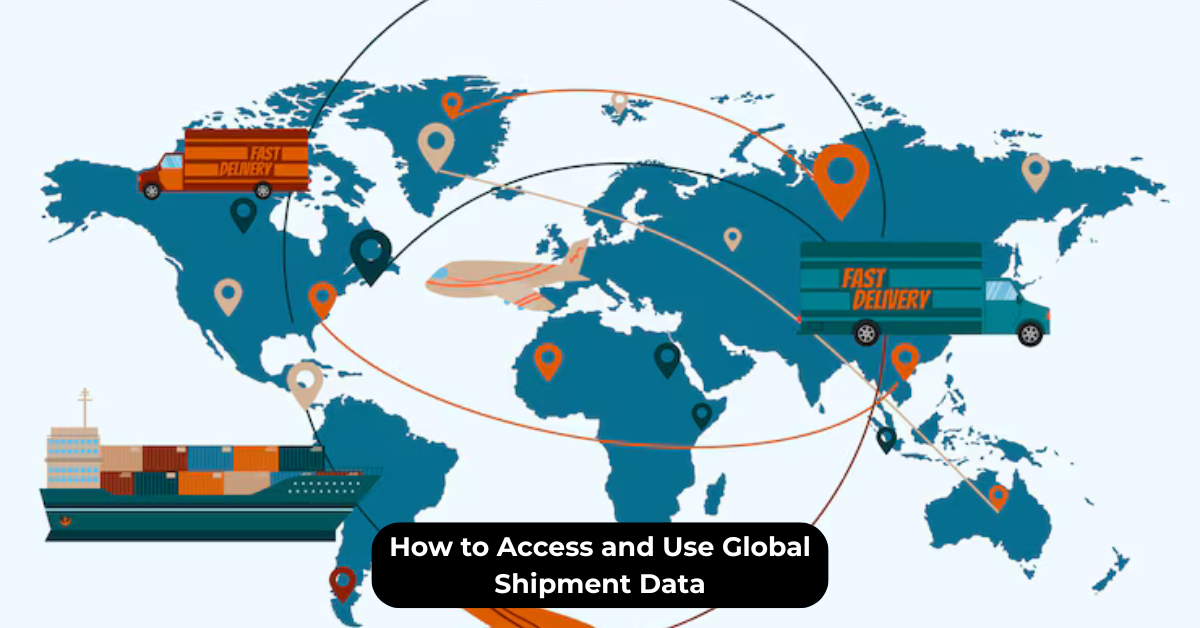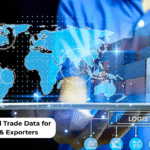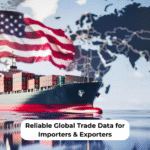Unlocking the Gateway to International Commerce
Globalization has connected the world like never before. Global Shipment Data Trade is no longer a geographical-constrained activity. Goods, services, and ideas freely cross continents with great velocity. Behind each transaction, each shipment, and each customs clearance are mountains of information referred to as global trade data.
This information is more than statistics—it’s the heartbeat of global commerce, an indicator of the flow of markets, the plans of industries, and the growth of economies. But the problem for businesses, policymakers, and entrepreneurs isn’t just being aware that this kind of information is available. The problem is knowing how to tap into and leverage global trade data in a meaningful way that provides true benefit. Global Shipment Data
Firms that have learned this skill are not merely surviving—they’re thriving. They employ data as their guiding light, pointing them in the direction of profitable markets, suggesting possible partners, and avoiding risks. Envision being able to forecast demand shifts in Asia prior to when they can wreak havoc in European supply chains. Global Shipment Data
Envision monitoring world trade statistics by country and determining up-and-coming economies that will be tomorrow’s growth drivers. This is not the right of a privileged few. With proper tools, resources, and methodologies, global trade data portal platforms can be harnessed by anyone to open the gates of opportunity.
The Magnetism of Global Trade Data
Why is global trade data so valuable? Because it is universal. All countries engage in trade, and every transaction leaves an impression. Whether oil tankers travel seas, e-commerce packages tracked by Global Trade Data FedEx, or farm products marked by customs departments, it all contributes to a vast repository of knowledge. Global Shipment Data
For companies, that translates into clarity in an uncertain world. Being aware of what their competitors are exporting, recognizing changes in tariffs, and being aware of import export data by country can be the difference between staying still and growing. For governments, trade statistics are the basis for formulating policies that shield local industries while promoting world partnerships. For investors, it’s a predictive window into market behavior. Global Shipment Data
The magnetism lies in being able to respond to immediate questions: Where are the rapidly expanding markets? What are the products demanded? Which nations are becoming new centers of trade? Sites such as Trade Map break the complexity down, giving organized reports and trends that took labor-intensive manual research.
Harnessing Interest: Tools and Gateways
Getting access to international trade data has grown less difficult, but the number of resources is simply too large for newcomers. The solution is to find the correct gateways. Global Shipment Data
1. Global Trade Data Portals
A global trade data portal is an online hub where international trade statistics are aggregated, structured, and visualized. These platforms provide filters by product category, trading partner, and timeframes. They allow users to compare exports, imports, and balance sheets across nations. From policymakers to entrepreneurs, these portals are the most direct route to actionable insights. Global Shipment Data
2. Global Trade Data Free Resources
Budget constraints should never get in the way. There are several institutions offering global trade statistics for free to the public. Some of them include the World Bank, UN Comtrade, and ITC’s Trade Map. They give users free access to download datasets, see trends, and spot opportunities without charging any subscription fees. These free resources can be quite enough for small enterprises experimenting with new markets.
3. Specialized Global Trade Data Providers
For companies requiring sophisticated intelligence, a global trade data provider can provide sophisticated reports customized to certain industries. The providers integrate customs information, logistics history, and finance insights to create an integrated picture. Global Shipment Data This enables businesses to monitor shipments in real-time, compare to peers, and accurately predict demand.
4. Corporate Platforms and Logistics Giants
Key logistics players like Global Trade Data FedEx offer access to meaningful datasets. These platforms combine shipping data with trade intelligence, making them particularly relevant for cross-border e-commerce businesses.
5. Government and Institutional Databases
Several governments publish world trade data by country through their commerce ministries. They are official, verified data sets frequently updated to capture evolving trade patterns. They are significant for businesses requiring regulatory conformity. Global Shipment Data
Why Trade Data Matters More in 2024
1. 2024 is a turning point year for Global Trade Data. Supply chains are being reshaped, digital trade is quickening, and geopolitics are reconfiguring historic trade lanes. It means uncertainty for companies, but enormous possibility.
2. With import export statistics by country, businesses are able to anticipate supply gaps early, diversify sourcing plans, and cut reliance on unstable markets. Picture a pharmaceutical firm finding a new, untapped African market with Trade Map, or an electronics exporter modifying pricing plans by reviewing real-time customs declarations.
3. Additionally, companies that leverage global trade information free resources become agile. They no longer have to depend on third-party reporting; rather, they can produce their own insights from unprocessed data. This independence enables decision-making across the board.
4. For investors, it’s equally high-stakes. Tracking world trade data by country shows where raw materials, energy, or technology demand is increasing. By responding to this information, they get ahead of slower-to-move rivals.
5. The appeal of using global trade data is that it is both microscope and telescope: it allows you to zoom in on details but at the same time scan across global trends.
Practical Steps to Utilize Global Trade Data
Having the information is just half the battle. The actual change comes when companies incorporate trade intelligence into their everyday strategies. Global Shipment Data
Step 1: Identify the Right Platform
Select a global trade data portal, global trade data provider, or global trade data free resources based on budget and intensity of requirement.
Step 2: Define Objectives Clearly
Ask focused questions. Are you looking for new export markets? Do you need insight into competitor supply chains? Or looking at tariffs and regulation changes? This specificity helps you pick the appropriate insights. Global Shipment Data
Step 3: Use Comparative Tools
Applications such as Trade Map enable comparing several countries, industries, or products. This makes it easier to spot gaps and opportunities that may be ignored by competitors.
Step 4: Integrate with Logistics Data
Partnering with logistics platforms like Global Trade Data FedEx provides a real-time advantage. It separates theoretical data from operational reality.
Step 5: Forecast Using Trends
Analyzing Global Trade Data 2024 can help businesses predict future changes. For example, rising raw material imports by some nations might mean future industrial growth.
Step 6: Share Insights Across Departments
Trade intelligence must not stay within strategy teams. Sales, marketing, procurement, and finance can all gain from including import export data by country into their processes. Global Shipment Data
Step 7: Update Regularly
The trade landscape is dynamic. Keeping an eye on it regularly ensures decisions are always in sync with real-time updates. Old data is as risky as no data.
Conclusion: From Data to Advantage
Access to international trade data is no longer a nicety but a necessity. For businesses looking to grow globally, for governments setting economic policy, and for investors looking to grow, data is the new currency.
Platforms like global trade data portal solutions, global trade data provider services, and Trade Map simplify access. Tools such as Global Trade Data FedEx enhance logistics integration. Free resources empower small businesses. Collectively, they turn information into insight and insight into impact. Global Shipment Data
The year Global Trade Data 2024 is about moving with urgency. Markets change overnight. Consumer tastes change fast. Policy environments shift at a moment’s notice. Those who move now, who see and incorporate world trade data by country into their plans, won’t merely be a part of global trade—they’ll be defining its future.
FAQs: Global Trade Data
Q1. What is global trade data?
Global trade data is a record of international imports and exports, including product details, shipment values, and trade partners.
Q2. Why is global trade data important?
It helps businesses identify new markets, analyze competitor activities, and connect with potential buyers and suppliers worldwide.
Q3. How do I access global trade data?
You can get it through government trade portals, customs authorities, and verified trade intelligence database providers.
Q4. Who uses global trade data?
Exporters, importers, logistics firms, consultants, researchers, and policymakers use it for market research and business growth.
Q5. Is global trade data updated regularly?
Yes, authentic providers update data frequently using customs records and shipping documents.



